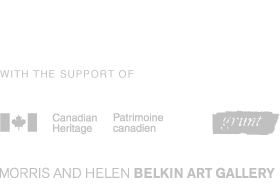Aboriginal Art in the Sixties: Fine and Popular
-
51
details
-
75
details
-
107
details
-
106
details
-
105
details
-
104
details
-
98
details
-
97
details
-
96
details
-
74
details
-
163
details
-
71
details
-
69
details
-
65
details
-
820
details
-
816
details
-
814
details
-
813
details
-
108
details
-
240
details
-
809
details
-
54
details
-
59
details
-
10
details
-
180
details
-
168
details
-
167
details
-
824
details
-
823
details
-
817
details
-
181
details
-
815
details
-
241
details
-
811
details
-
787
details
-
786
details
-
784
details
-
242
details
-
810
details
-
244
details
-
52
details
-
158
details
-
171
details
-
166
details
-
165
details
-
162
details
-
161
details
-
160
details
-
159
details
-
157
details
-
176
details
-
156
details
-
103
details
-
102
details
-
101
details
-
93
details
-
60
details
-
55
details
-
174
details
-
177
details
-
172
details
-
243
details
-
170
details
-
169
details
-
164
details
-
73
details
-
828
details
-
819
details
-
818
details
-
234
details
-
178
details
-
233
details
-
232
details
-
231
details
-
230
details
-
183
details
-
182
details
-
821
details
-
179
details
-
89
details
Museums, Mentors and Merchants
The path of development of many BC Aboriginal artists provides evidence of their mentorship by important Euro-Canadian artists and institutions. Francis Baptiste and Judith Morgan were mentored by day and residential school teachers who saw ‘art’ as a means of education, and arranged for the public exhibitions of children’s work in such places as the Vancouver Art Gallery. Baptiste and Morgan had become aware of their works’ public value before enrolling in art schools. Morgan was taught to paint by Gordon Sinclair, and supported by Lawren Harris in the exhibition of her work at the National Gallery in Ottawa. Harris also was instrumental in encouraging George Clutesi to paint on large canvases. When Clutesi had his first exhibition at the Provincial Museum in Victoria, the Acting Director Dr. Carl introduced him to Emily Carr. Clutesi began painting in oils, and by 1962 had completed 50 canvases, seven of which were acquired in 1947 by the University of British Columbia, the first major sale of his work.
The two-day meeting of the B.C. Indian Arts and Welfare Association at UBC in 1948, organized by Alice Ravenhill, was a watershed event for the public recognition of “Indian art.”
Dr. Harry Hawthorn unpacking paintings for the Museum of Anthropology
Ellen Neel held her first exhibition at UBC under the sponsorship of BCIAWS. As a result of this exhibition, the University President bought Neel’s first “polished” totem pole. Soon after, the Neels carved a pole as gift for the Alma Mater Society. UBC was also a source of support for other Native artists in the form of totem pole restoration and replication projects such as those conducted at Totem Park, for which Bill Reid and Doug Cranmer were commissioned. Because creating historic and intellectual value for art works also create markets, museums became merchants and mentors. Private dealers such as Gyula Mayer would “discover” emerging artists such as Henry Speck, collecting and promoting his work. In 1964, “A World Premiere” opening of Speck’s work was staged. By 1967, Speck had become well known and 245 of his works were bought by the Glenbow Museum.
The experience with galleries, dealers and museums led some aboriginal artists to begin to market their own and other Aboriginal artists work themselves. Contemporary painter, Paul Yuxweluptun says “Henry Speck broke the form line. He drew hair over the line, and made what was a stylized two-dimensional image into a pictorially three-dimensional one. I remember seeing his small catalogue from 1964 in my father’s library: it was new, on paper and in colour. He used new inks, new materials – it was modern. Colour was his signature; he had a certain style that other artists would try to copy. His influence on me was colour, because back then there was more black and white.”
